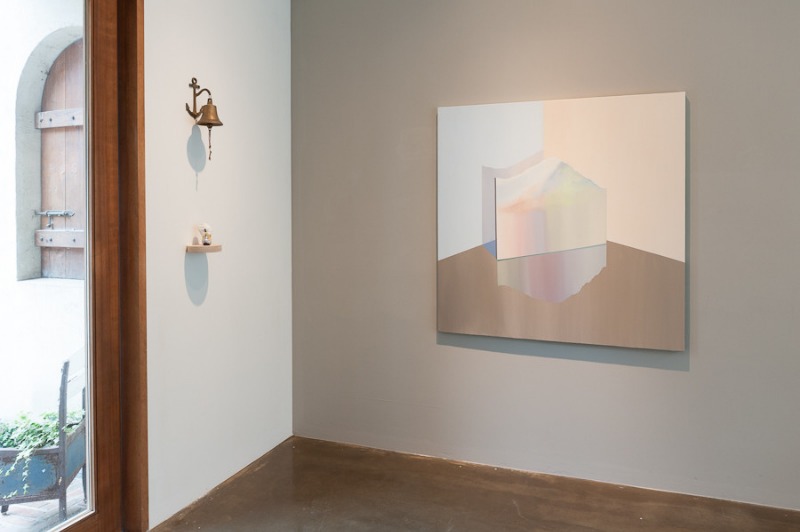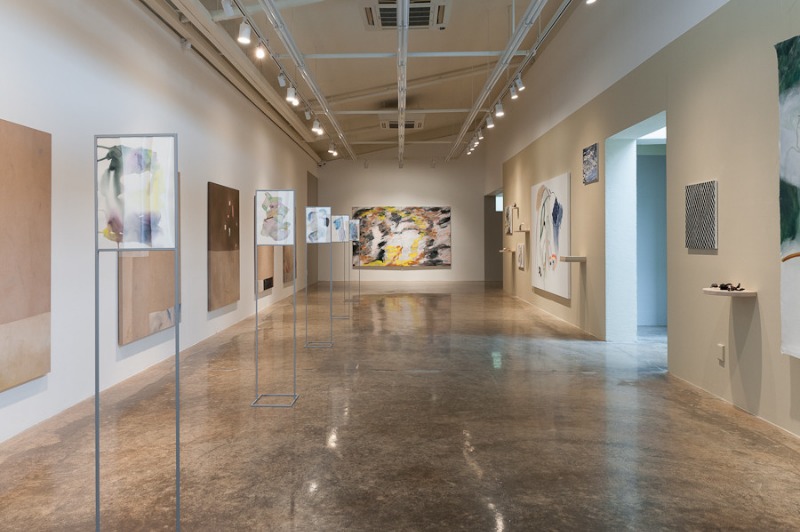
| Period| | 2019.07.06 - 2019.09.23 |
|---|---|
| Operating hours| | WED - SUN 11:00 - 18:00 |
| Space| | Gallery Datz/Gyeonggi |
| Address| | 184, Jinsaegol-gil, Chowol-eup, Gwangju-si, Gyeonggi-do, Republic of Korea |
| Closed| | Monday, Tuesday, Lunar New Year, Chuseok, Election Day |
| Price| | |
| Phone| | 070-4193-2581 |
| Web site| | 홈페이지 바로가기 |
| Artist| |
|
정보수정요청



|
|
Exhibition Information

Datz Museum of Art holds The Texture of Temperature as its second exhibition this year. Featuring four artists—Hee K. Bae, Fay Shin, Sodam Lim and Eunhyea Choi—the exhibition takes off from the question of how abstraction is represented in art. The artists, while composing unique abstract images through form and color, and immersing themselves in exploration of artistic form, delicately convert their areas of interest, which are the agents of their abstract images, into painting, ceramics, video and installation. The stories of the four artists, abstracted through artistic sensibility, are transferred to us as emotional temperature, thus evoking new imagination. We invite you to a space filled with the works of these artists who have created new texture in art through their different variations of abstraction. Abstraction, which rose rapidly in the history of art from the time of Modernism, saw form, color and art media themselves as the main subjects. Though abstraction as art for art’s sake was no longer the center of attention from the latter part of the 20th century, the genre of abstract art has been clearly engraved in the history of art, and is still present in the world of art today. The works of the four artists introduced in the exhibition The Texture of Temperature all show abstract characteristics. But they do not focus only on the visual play of the media. Rather, they immerse themselves in the process of answering the question of how they will represent their temporary or continuous interests, discovered in their actual everyday lives, through unique sensibility in terms of media. That is to say, the abstract senses revealed in the four artists’ works connote certain “stories”. Hee K. Bae’s story begins from identity. The artist, living the life of a migrant as she travels back and forth between Korea and India, represents such experiences as artworks. Her video work Dia-DrawingRoom(2018) begins with a scene of her talking with migrants. The people, treated obscurely in the video image, are re-projected as monochrome, two-dimensional painterly elements. Thus the work reveals the story, and the borders of the artist’s abstract interpretation of the story, enabling us to glimpse her sense of meta-media. Fay Shin focuses on her own senses, which are highly sensitive to elements in her surrounding environment, such as weather and temperature, and endeavors to reveal them through painting. In the process, she does not limit herself to traditional painting media, but expands the scope of her expression through diverse experimentation. She instantly sprays the side of the canvas with a color spray can to express what she has sensed in the weather, or dyes fabric using the tea that kept her warm in the cold season, weaving it into an artwork. The sensitive temperatures of the everyday, felt with the artist’s whole body, are thus transferred to us tactilely through such methods of representation. Sodam Lim has compared her work to a dream. Dreams, consisting of obscure scenes that are sometimes recognizable and sometimes not, create a story that can never be completed, with fragments of daily life, memories and thoughts that have accumulated in the mind. Her works, resembling dream images, are closer to figurative painting than those of the other three artists, but in fact clearly present a complex non-figurative state of emotion. Perhaps that is why we often feel a sense of déjà vu when facing Lim’s work. Eunhyea Choi captures middle-points from her daily life experiences, and focuses on re-composing them. These originate from actual obscure landscapes seen from the window of an airplane, or start from the act of representing time-space with particular colors or shapes. Moreover, in her Collecting Scenes series she embodies her unique senses by building a geometric structure out of material and non-material elements collected from daily life. The abstract landscapes brushing past as they float amidst life, are unfolded once more before our eyes through the artist’s gaze. The abstractions of the four artists each demonstrate conceptual, tactile, lyrical and compositional characteristics, but also create a new harmony within a single space. Such variations, which take place in the process of “representing” stories through abstraction, add depth and width to our sensibilities as well. We hope the temperature of the artists’ delicate views can transfer warmth to the hearts of viewers. Minjung Kang Curator, Datz Museum of Art
